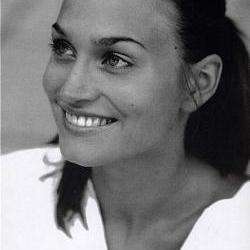Wagner’s monolithic Der Ring des Nibelungen: fifteen hours of music over four intense evenings. So many leitmotifs, so many instrumentalists, so much epic drama. Counterintuitive though it may seem, Tatjana Gürbaca, Bettina Auer and Constantin Trinks wondered what it would be like to condense this mammoth composition into three evenings, and mix things up a tad. They present the Ring on three consecutive evenings in around nine hours of music, with a focus on the second generation. Hagen, the first chapter, features music from Das Rhinegold and Götterdämmerung woven seamlessly together, telling the story from the perspective of Hagen, son of Nibelung dwarf, Alberich.
The drama opens with the murder of Siegfried by Hagen (Samuel Youn). Siegfried (Daniel Brenna) is then replaced by Alberich (Martin Winkler), and Hagen by himself as a child. This child version then silently accompanies his father on a trip – a memory perhaps - to the muddy Rhein. There, Alberich is humiliated by the Rhinemaidens (Mirella Hagen, Raehann Bryce-Davis, Ann-Beth Solvang) – in sequins and curls and big rubber boots – then tricks them, steals their gold and enslaves them with the help of his brother, Mime (Marcel Beekman). All of this is observed by Young Hagen, who seems disgusted by the whole lot. At one point the child writes “Huren” (whores) on the white wall flanking the scene in the Rhine mud. He bears witness later to his father’s humiliation and torture by the gods Wotan (Aris Argiris) and Loge (Michael J. Scott), here two sadistic, prep school douchebags. This focus on Hagen’s instrumentalization by his father, who creates the “implacable hate” within him, helps contextualize the second half of the evening. Hagen deftly organizes the marriages of Siegfried to Gutrune (Liene Kinča) instead of Brünnhilde (Ingela Brimberg), who along with Gunther (Kristján Jóhannesson) are pushed by Hagen to plot Siegfried’s demise.
This production is particularly significant in that it almost farcically strips character and action from all its majestic trappings. Just like the Rhinegold, which sometimes gleams brilliantly under certain lighting (Stefan Bolliger), but most of the time just looks like greyish mud or ash, props, scenery, costume and behaviour is reduced to the childish, brutal, disgusting and banal. Siegfried’s “sword” is a butter knife, his horn a plastic trumpet and he himself is a tie-dyed T-shirt-clad teenager. Gunther and Gutrune are bespectacled, mousy wallflowers who play video games and knit respectively. Brünnhilde swears revenge on Siegfried over a bottle of hooch, and even the supervillain, Hagen, is just a guy in corduroys with anger issues. Wotan and Loge hack off Alberich’s hand with a butcher’s saw, and the men’s choir (Arnold Schoenberg Choir) are caricatures of prancing homosexuals in white shorts and knee socks who don fake noses and perform sex acts on each other in slow motion until they are shooed off-stage. In short, there is not an admirable or noble character to be found from beginning to end and, without their epic personifications, the intrigues of these gods and creatures just seem cruel and ridiculous.
By far, the freakiest in this land of freaks is Alberich, and Martin Winkler’s personification of him physically and vocally is as laudable as it is disturbingly grotesque. Protruding belly, covered in mud or sporting gold cowboy boots and wife-beater, and with a (literal) thirst for blood, Alberich is a walking nightmare, part-Voldemort and part-Gollum. It is these individual performances and Gürbaca’s detailed Personenregie which makes this experiment effective. Vocally and musically, there is likewise much to recommend. Samuel Youn has bass notes that do not quit, Ingela Brimberg has the heft, colour and decisive legato to bring a much larger house down and Winkler is a vocal chameleon. Wagnerites may have trouble accepting the reduction of Wagner’s massive scoring to a mere 62 instrumentalists, but the ORF Radio-Symphonieorchester gave it their all under Constantin Trinks.
In short, this is a fascinating, ambitious attempt to recontextualize the Ring. Whether or not its merits are enough to outweigh its obvious weaknesses is questionable: massive score cuts, for example, are almost certainly crippling to the musical core, and I cannot imagine the second and third evenings completing the story effectively either scenically or musically. That being said, any intelligent reimaging of a masterpiece, whether a success or failure (gold or ash) can offer brilliant insight and allow us to return to the original in new and fascinating ways. Well done, Theater an der Wien, for reinforcing its reputation as the most innovative and experimental of Vienna’s opera houses.




